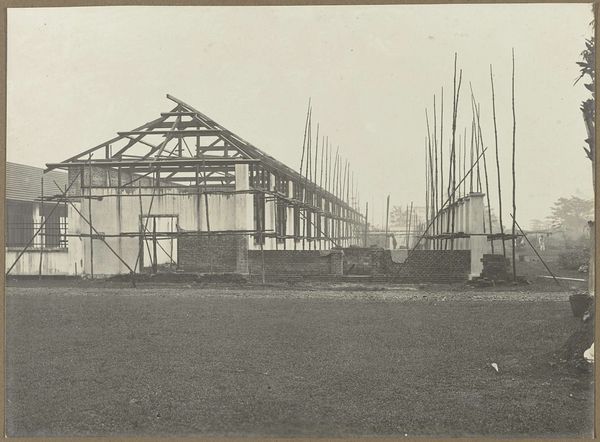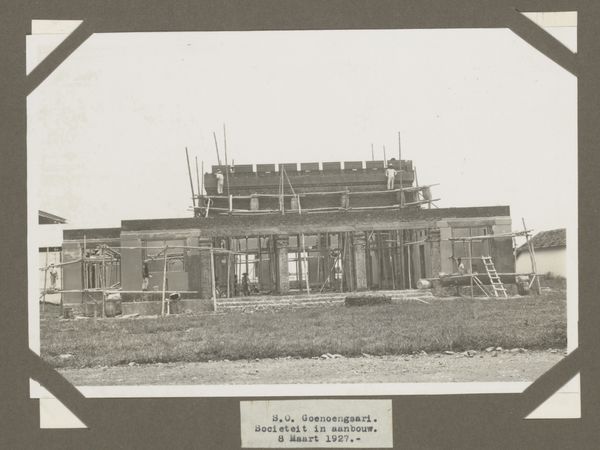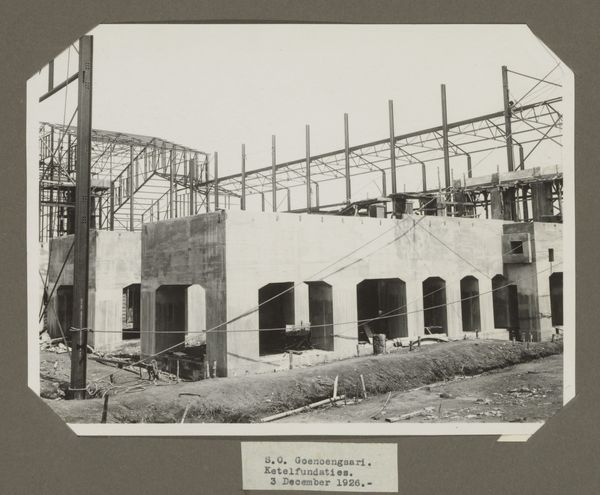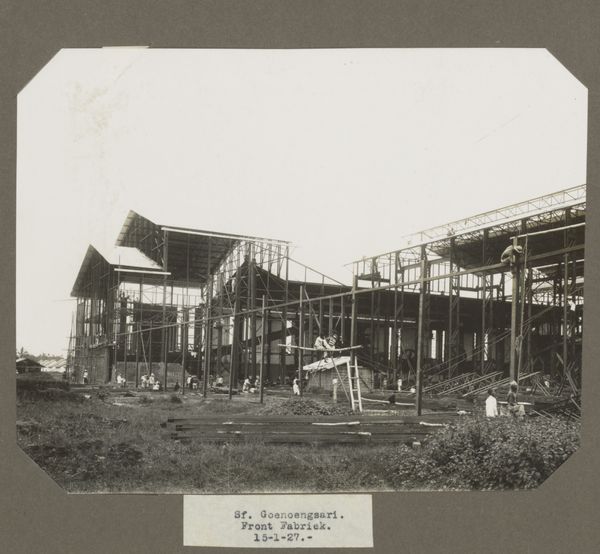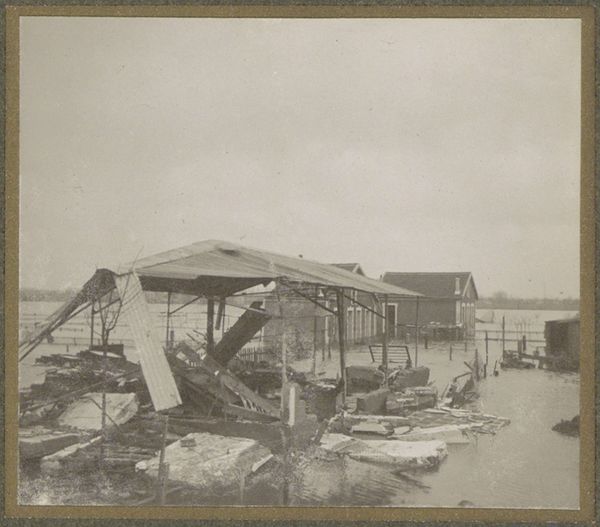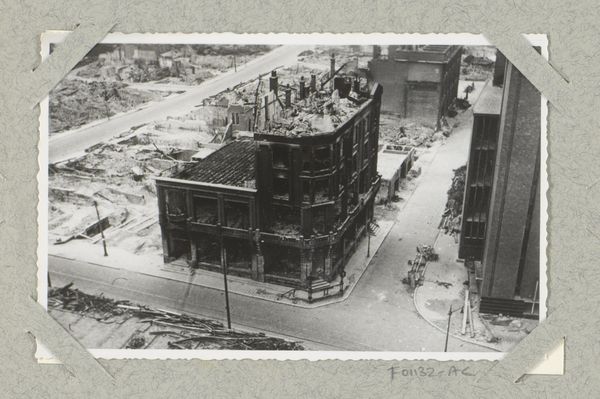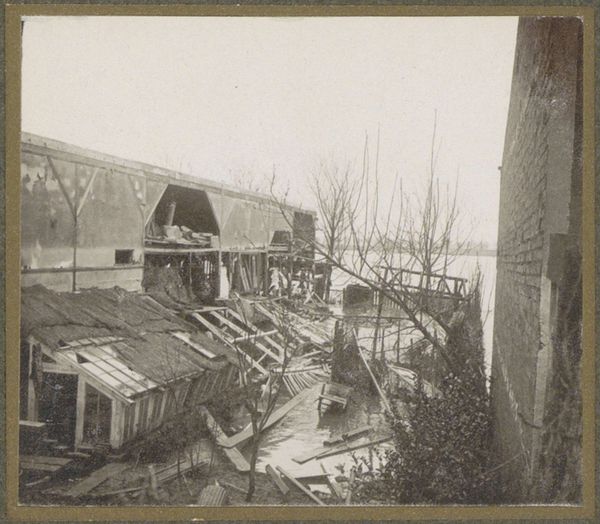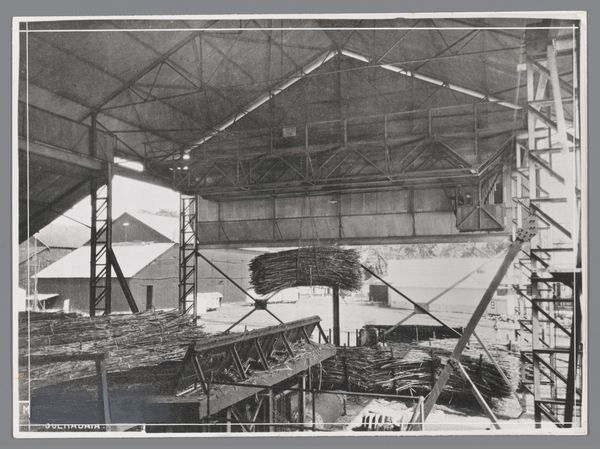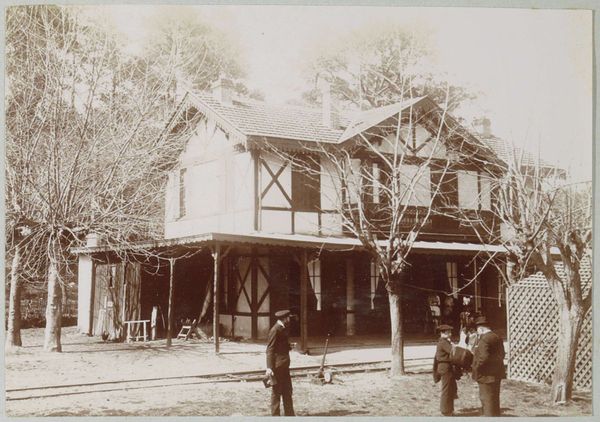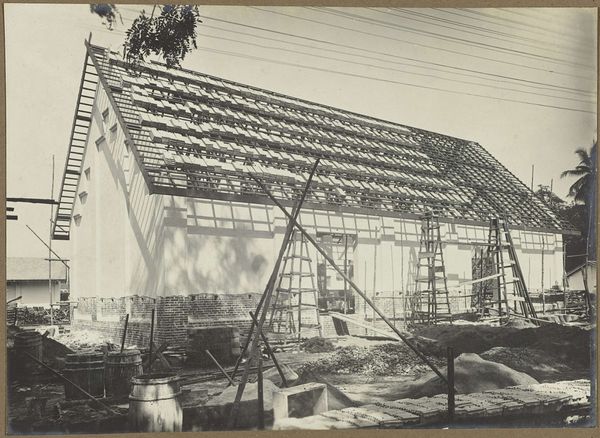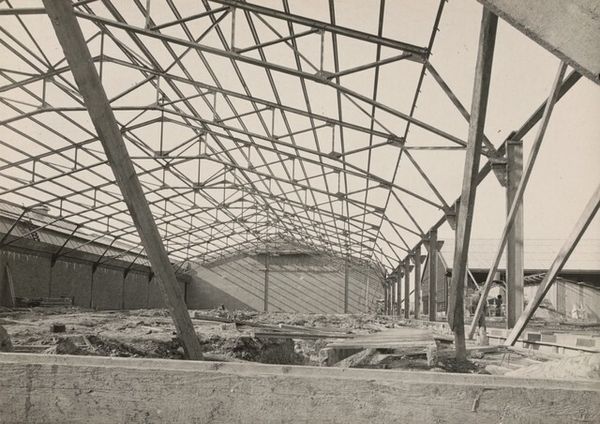
photography, architecture
#
aged paper
#
toned paper
#
photography
#
architectural drawing
#
cityscape
#
architecture
Dimensions: height 147 mm, width 200 mm
Copyright: Rijks Museum: Open Domain
Curator: Bouwplaats, taken sometime between 1914 and 1919, it is an unattributed photograph capturing what seems to be a building under construction, with all its intricate wooden scaffolding, probably somewhere in the Dutch East Indies. Editor: My first impression? Organized chaos! All those lines crisscrossing make me feel like I’m looking at the inside of a meticulously built bird's nest. There's a stillness too, the bike leaned against the unfinished wall gives the scene an eerie yet intimate feel. It's frozen energy. Curator: It really speaks to a particular moment in the colonial architectural landscape, doesn't it? Construction wasn't just about erecting buildings. It was about asserting power and shaping urban environments to mirror European sensibilities. This building represents more than bricks and mortar. It represents transformation—a visible sign of control. Editor: You see power, I see possibility. All this construction – what could this building be? Shops, homes, something completely new? I also feel the tension of creation. This moment right before something emerges... What sort of statement were they going to make? It also hints at unseen human presence; I bet people who lived here felt displaced, uncertain… Did they look up in awe, or in anger, at all the scaffolding? Curator: Absolutely. The architecture of colonialism always involves erasure. Even a photograph, appearing objective, is laden with the gaze of the colonizer. By leaving the image un-attributed the subjects, likely local workers, are not given credit for their effort. It also speaks to an imbalance in historical records, where everyday builders are anonymized while patrons become memorialized in time. Editor: That silence around the labor is almost palpable! It adds a layer of melancholy that wasn't initially obvious. It's almost as if the photograph, beautiful as it is in its composition, whispers what wasn't supposed to be remembered or documented. How does the erasure shape the ongoing discourse in modern-day city planning? Curator: In really complex ways. You have scholars actively working to decolonize public art, address historical biases embedded in urban planning, create narratives around suppressed architectural and indigenous histories. "Bouwplaats," therefore, becomes less a historical document and more of an investigative prompt. It’s interesting how something that appears solid and fixed, a construction site, ends up revealing much of what remains unfinished and ongoing. Editor: You are right, what stands as the backdrop and the reality often is quite blurred together in this shot.
Comments
No comments
Be the first to comment and join the conversation on the ultimate creative platform.
